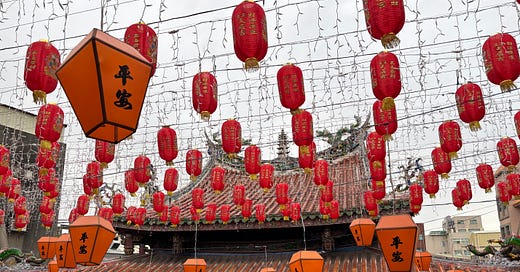Lukang
I jumped at the opportunity when my friend offered to show me around her city. The high-speed train took an hour from Taipei to Changhua. Easy and smooth.
Before the trip, she asked, “Are you okay with temples?” “Yes, I don’t have any taboos against temples,” I said. But I didn’t realize there were so many.
Lukang, or “Deer Harbor,” was once the most popular and happening seaport in Taiwan. Even though it’s no longer, due to its history, it has some of the most ancient temples on the island.
We started our walk at the Wen Wu Temple, in the southern part of the city. Wen and Wu mean arts and military, which are the specialties of the gods here. For example, if a person is preparing to take the national exam, she would pray to the god of the arts.
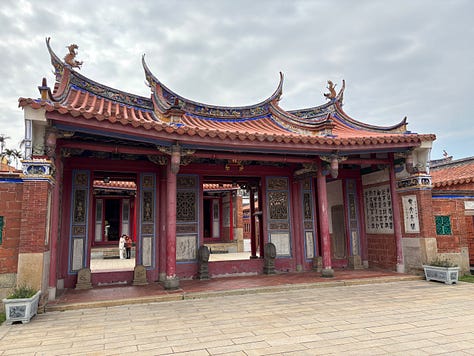
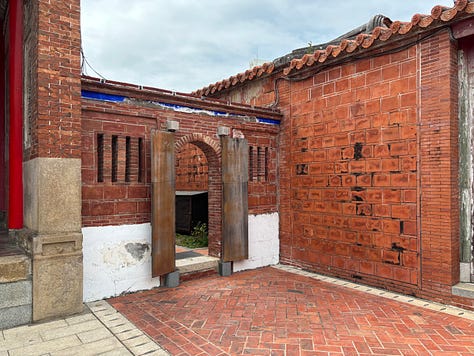
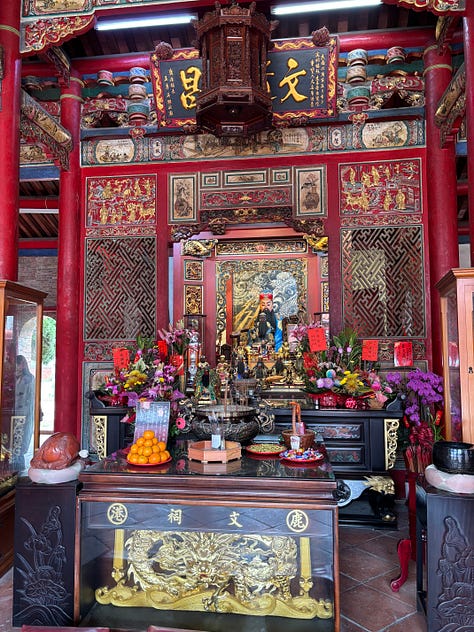
Our second stop, only a couple of blocks away, was the national relic Long Shan Temple. Long is Dragon; Shan means mountain. The main deity here is the Bodhisattva Guanyin, who is at the back, the deepest part of the worship hall. Walking here, admiring the intricate woodwork and pastel coloring, I was overwhelmed with a sense of peace.
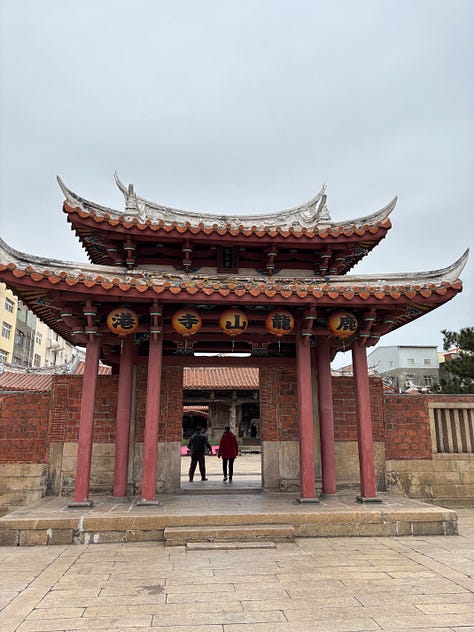
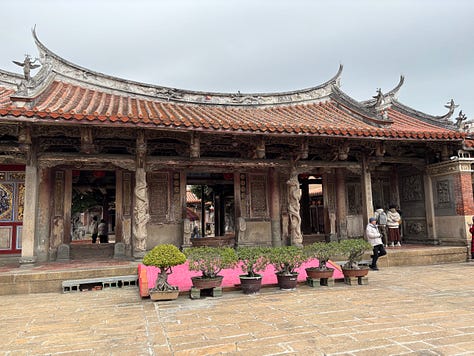
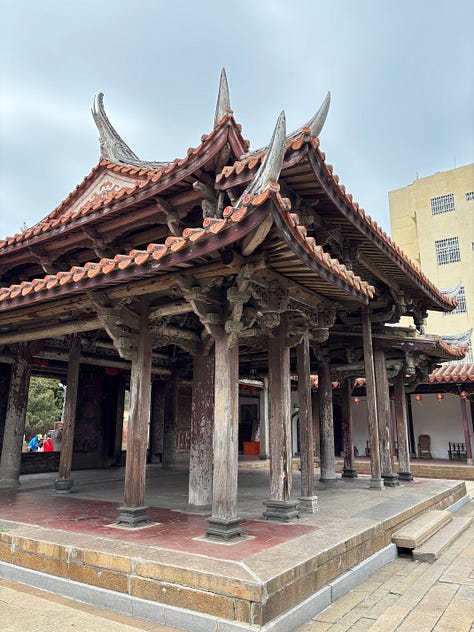
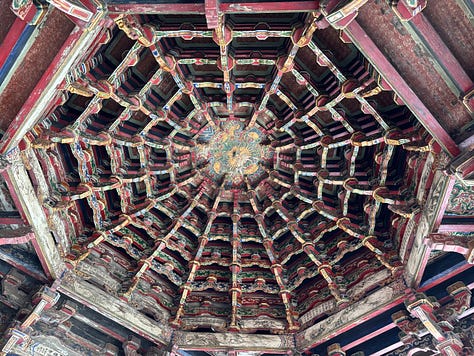
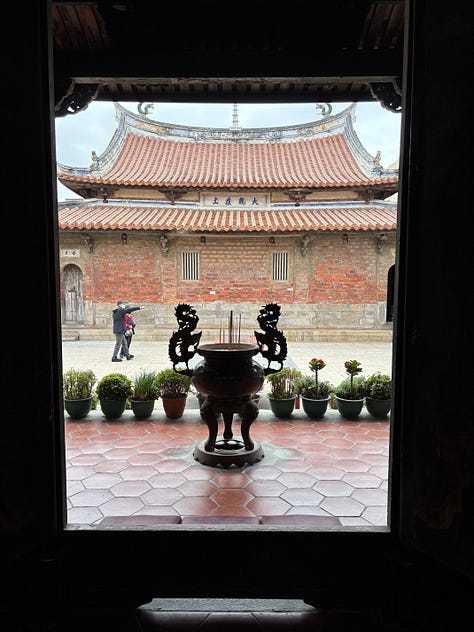
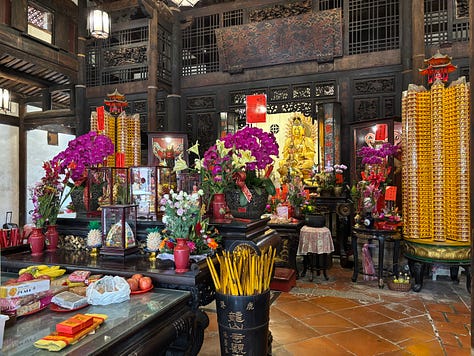
The temples usually have a front gate. Some have three doors, some have five. Then there is a courtyard. Then a worship hall. The bigger the temple, the more halls there are, i.e., a deeper second worship hall, or a second floor.
My friend explained how to communicate with the gods by buabei using half-mood blocks. The half-moon-shaped wooden block has a flat side, the bottom, and a round side, which is the top. One holds two pieces of the half-moon blocks in both hands, asks a question silently, and then throws the blocks on the ground. If one is the right (round) side up and another is bottom (flat) side up, then the answer is yes. The god agrees. If both are rounds, then the answer is no. If both are flat, then that means the god is smiling, i.e. the question doesn’t make sense, or it’s obvious, etc. In this case, one can change the question and ask (better) again.
From there, we walked through the Lukang Old Street which was filled with little shops. The half-sided well shows the hospitality of one local family, who shared their water with the public by building half of the well outside the wall. Breast Touching Lane shows the humor of the locals which is a very narrow street that if two people pass each other, their chests would touch. Let’s not forget that Nine Turns Lane’s twists and turns are charming and historic.
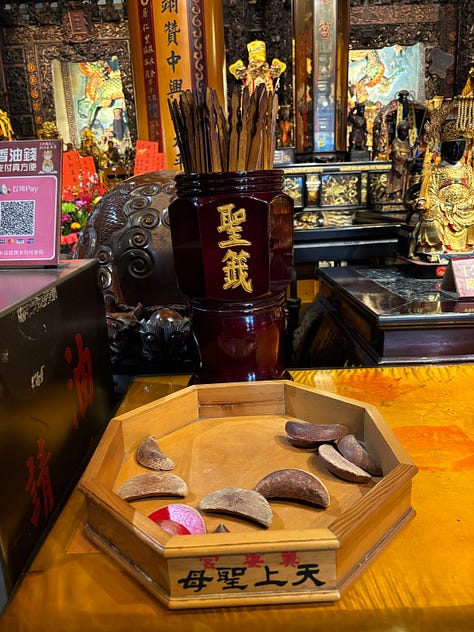
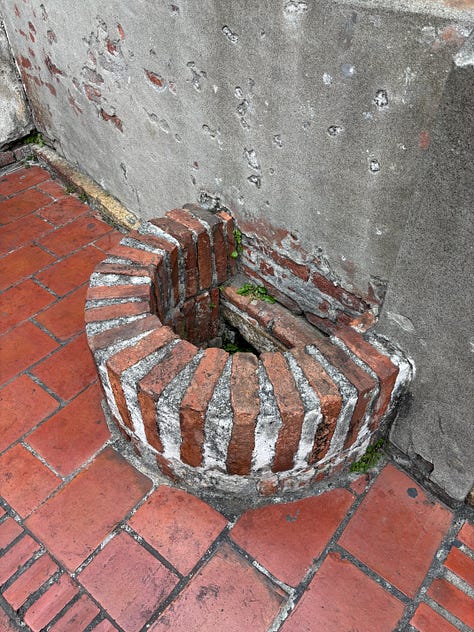
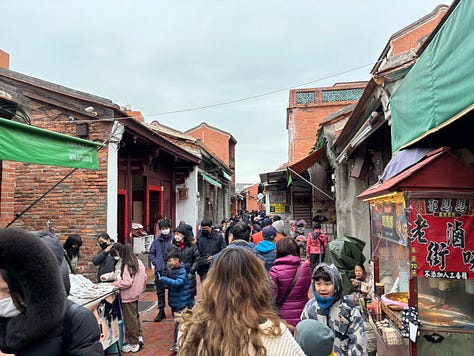
As we headed to the most northern part of the city, Tian Hou Temple stood majestically in a busy square. My friend told me to pay our respects with a hand praying and not use incenses. I must have paid my respects to at least fifty gods and goddesses during this walk in Lukang. In front of each god/goddess, my friend told me their name or specialty. I was quite impressed by her knowledge. I asked her how she knew who it was. She smiled a little and pointed to the top where there was a plaque with a name.
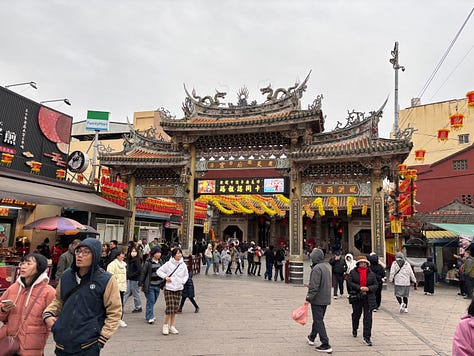
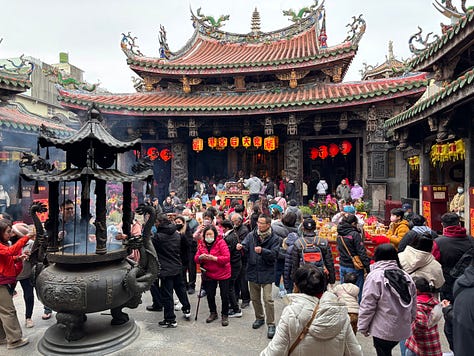
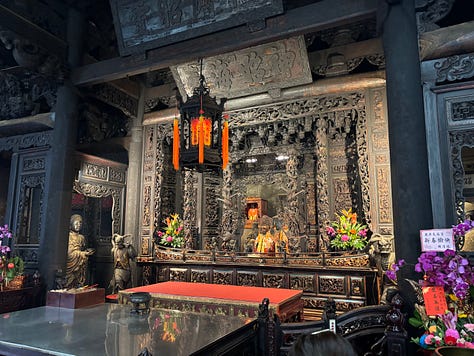
Traveling in Europe often reminds me of endless churches; similarly, in this old town, we have temples. So many people have come here before me to pray. We didn’t get to half of them. In front of the gods and goddesses, I didn’t pray for anything and only offered my sincere thanks to be alive, meet, and pay respect to them.
In between visiting temples, my friend introduced me to local street foods which were cheap and yummy. Too many to mention. I even bought a pair of traditional Japanese wooden shoes.
I have spent many years running forward working with leading-edge technology and in corporations. On a day like this, taking a moment to look to the past, Lukang has shown me the beautiful local culture and old traditions part of people’s lives here for a long time. I’m glad our history is not lost.
Endless temples, street foods, and conversations: what an amazing day. I returned home with a full heart and stomach.

